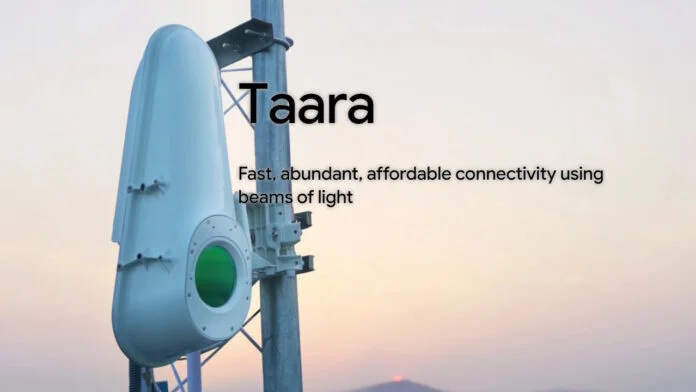Islamabad, 30 May, 2025: Taara the name might not yet be widely recognised, but it’s quietly transforming the way internet connectivity is delivered around the world. While global attention remains fixed on satellite networks like Starlink, this California based company, spun out from Alphabet’s experimental X division, is introducing a new kind of internet one that moves not through cables or satellites, but through light itself.
Laser Beams: A New Way to Send Data
Taara uses invisible laser beams to send high-speed data between two fixed points. Unlike Starlink, which depends on a fleet of satellites in orbit, Taara relies on ground-based terminals called Lightbridges devices the size of a traffic light that can be mounted on rooftops, poles, or towers.
These Lightbridges can transmit data across distances of up to 20 kilometres, with speeds reaching 20 gigabits per second.
READ MORE: Starlink Internet Packages in Pakistan
This is several times faster than what is typically achievable via satellite internet. Most impressively, the system can be set up within hours no cables, trenches, or rockets needed making it cost-effective and eco-friendly.
Real-World Success Across Continents
Despite sounding futuristic, Taara has already proven its effectiveness in over a dozen countries. A standout example took place in Central Africa, where the system successfully connected Brazzaville and Kinshasa two capital cities divided by the Congo River.
In that trial, more than 700 terabytes of data were transmitted with 99.99% reliability, all at a significantly lower cost than traditional fibre or satellite solutions.
Taara’s technology has also been used in the United States to enhance mobile network capacity at large-scale events such as Coachella, showcasing its flexibility in both urban and rural settings.
High-Tech Tracking Keeps It Online
Because laser communication requires a clear line of sight, Taara uses an intelligent auto-alignment system that adjusts the beam’s direction in real-time. This allows it to maintain stable connections even in challenging weather or terrain conditions, such as fog or across valleys in Kenya.
The company is also developing a miniaturised photonics chip, expected by 2026, which could integrate this laser tech into IoT devices and driverless vehicles, expanding its use far beyond telecom.
A Partner to Satellites, Not a Rival
Taara is not aiming to compete with satellite networks like Starlink. Instead, it fills in the gaps offering high-speed, short-distance connections in areas where cables are impractical but full-scale satellite coverage isn’t needed.
It’s especially useful in mountainous regions, islands, or cities separated by rivers or railways, and can act as an emergency backup to fibre lines.
READ MORE: Starlink Could Provide Lifeline Internet to Underserved Regions
Mission: Universal Internet Access
Now an independent company, Taara is working with telecom firms, NGOs, and governments to expand internet access globally. Its ambition is simple yet powerful: to make fast, low-cost internet available to all, especially the three billion people who remain unconnected.
With its scalable, environmentally conscious design, Taara could soon become a crucial part of the world’s digital infrastructure.









